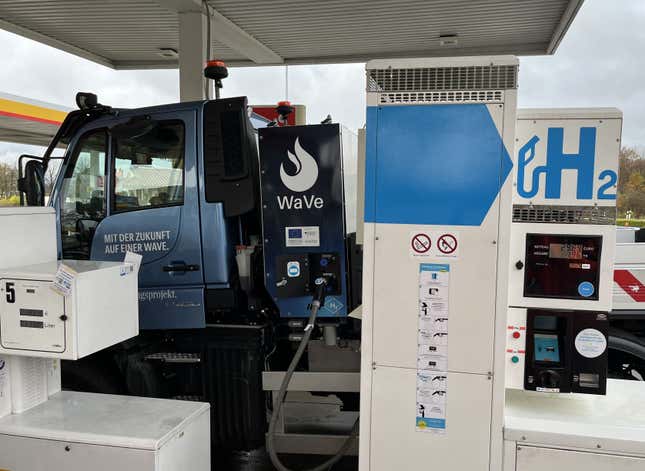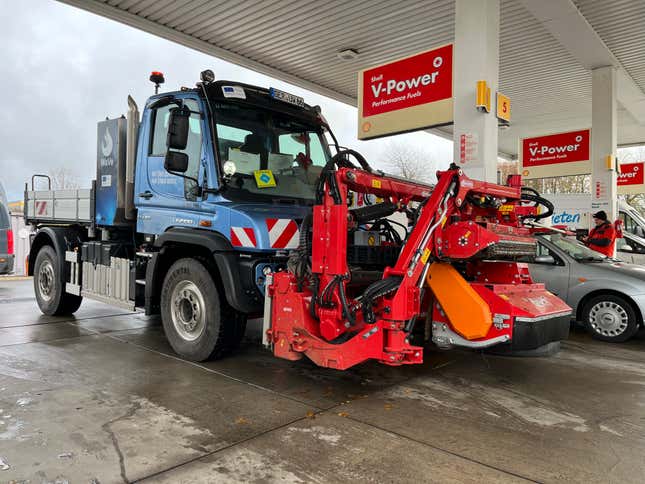Mercedes-Benz Is Testing A Unimog With A Hydrogen-Powered Inline-6 Combustion Engine

Photo: Mercedes-Benz
Look, as cool as it could be and as much as automakers want it to happen, a worldwide switch to hydrogen passenger vehicles is just not realistic or even possible. But as the technology improves, hydrogen fuel cells become more appealing and possible for use in commercial applications, like long-haul semi trucking and delivery vehicles. Mercedes-Benz has previously shown a prototype hydrogen fuel-cell semi that did 621 miles on one tank, and now the brand has revealed a prototype Unimog that uses hydrogen to power an inline-6 combustion engine.
According to Bob: Why the AMG C63 Hybrid Is So Goddamn Cool
If you aren’t already aware of its gloriousness, the Unimog is Mercedes’ giant off-road rig that has been in production since 1951, forming the basis for everything from fire trucks and construction vehicles to go-anywhere RVs and passenger trucks.
This hydrogen prototype is based on the Unimog U430 “implement carrier” model, essentially the ‘Mog equivalent of a pickup truck. Its 7.7-liter inline-6 engine has been modified to accept hydrogen instead of diesel fuel, with the only resulting emissions being water vapor from the tailpipe. The engine has new safety and monitoring systems plus electronic system updates to work with the hydrogen setup. Mounted behind the cab are four 700-bar tanks in total that hold 31 pounds of gaseous hydrogen; they are combined into a pair of larger tanks that can be controlled independently. Mercedes says the engine makes 290 horsepower and 738 pound-feet of torque when using hydrogen, a bit less than the 299 hp and 885 lb-ft when running diesel.

Photo: Mercedes-Benz
Mercedes fitted the test vehicle with a cool two-arm mowing setup, and the engineering team used it on a decommissioned highway to gather data, refueling at a public station after the trip. Mercedes says the Unimog is much quieter when running on hydrogen power, and the goal for the project is to upgrade the Unimog to hold enough hydrogen so a real work truck could go the entire day without needing to refuel.
The hydrogen combustion engine is part of the publicly funded “WaVe” program, where 18 different partner companies and agencies are working together to determine whether these engines can supplant diesel-powered engines. Despite this development, Mercedes says it is focused on battery electric and hydrogen fuel cells for production and commercial uses. I’d love to see what a next-gen Unimog EV would look like.

Photo: Mercedes-Benz




